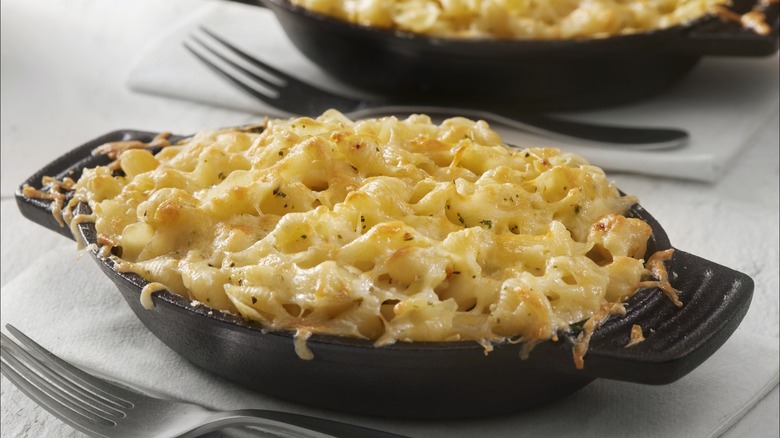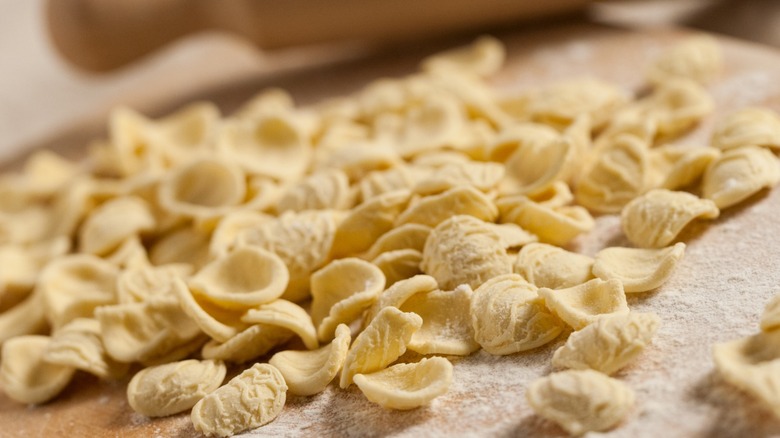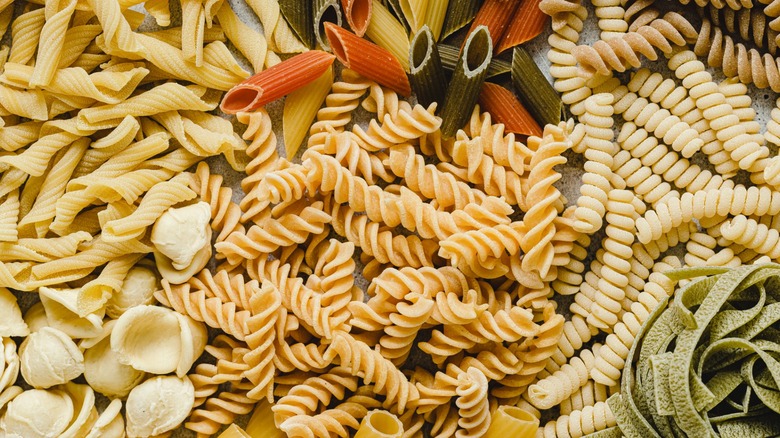Your Mac And Cheese Will Taste Even Saucier With One Simple Swap
What comes to mind when you think of your favorite comfort food? Ask someone this question, and there's a really good chance that a classic, hearty macaroni and cheese makes the list. Heck, it might even top the list. Mac and cheese is a comfort food staple partially due to its simplicity, but also due to its versatility — it's simple enough to make with little effort, but it can also act as a blank canvas to flex your own creative culinary muscles. As a result, it seems that everyone has their own preferred version of mac and cheese, each with their own unique spin on the time-honored dish.
It should be expected, then, that since there are virtually countless ways of making macaroni and cheese, there are also many little hacks teaching you how to level up your own mac and cheese dish. Most of these focus on the cheese sauce component of the dish, from adding canned cream soup for a rich flavor boost to using egg yolks to make boxed mac and cheese creamier. Indeed, there's an ample supply of cooking tips to make the most of your mac and cheese, but many fail to consider a pivotal component: the pasta itself. While macaroni might be the standard pasta shape for you, swapping it out for a ridged pasta like orecchiette is a true game changer for making your mac and cheese taste even better.
Why does the pasta shape matter?
There's an absolute litany of pasta shapes out there, giving you the potential for a bit of analysis paralysis when choosing one for your mac and cheese. As a result, you might just defer to the standard macaroni, and that's understandable. But the pasta shape really does play a huge role in how your mac and cheese turns out. In this case, orecchiette can be a real X-factor, and it all has to do with how the pasta itself plays with your cheese sauce.
If you're looking for a pasta shape that can soak up lots of flavorful sauce, look for a shape that has ridges in it. Ridged pastas have more surface area exposed to your sauce but still come in a relatively small package, allowing great amounts of sauce to stay on each and every piece. The overall shape also matters, of course, with some pastas coming in concave, cup-like shapes that allow the sauce to gather within the pasta itself. Orecchiette is a pasta shape that is both ridged and cupped, making it doubly effective when used for mac and cheese. Your cheesy sauce will adhere to the ridges of your orecchiette while also pooling in the tiny bowl shapes of the pasta, making every bite exceptionally saucy and flavorful.
Experiment with pasta varieties
Of course, orecchiette isn't the only pasta that can level up your mac and cheese experience. There are a slew of pasta shapes out there that have well-defined ridges and shapes. Several varieties of pasta sprout out in twisty, cornet-esque shapes. One of these is campanelle, little conical pieces of pasta that can soak up sauce particularly well. Another is torchio, a ridged pasta shape fashioned in a wide spiral that converges on itself. Torchio serves as the go-to pasta for Jeff McInnis's mac and cheese, a dish that ranks among the best mac and cheese offerings in the United States (per Food and Wine). You could also try something like casarecce, which has a quasi-tube-like shape that acts as a large ridge to gather up all the sauce.
Whatever your choice, you can be assured that your mac and cheese will be greatly improved with a new and adventurous choice of pasta, even if the name "mac and cheese" becomes a bit of a misnomer. Whether you use orecchiette, penne rigate, or any number of the interesting pasta shapes listed above, swapping out your elbow macaroni in this ultimate mac and cheese recipe from Homeroom can make an already amazing dish even better.


